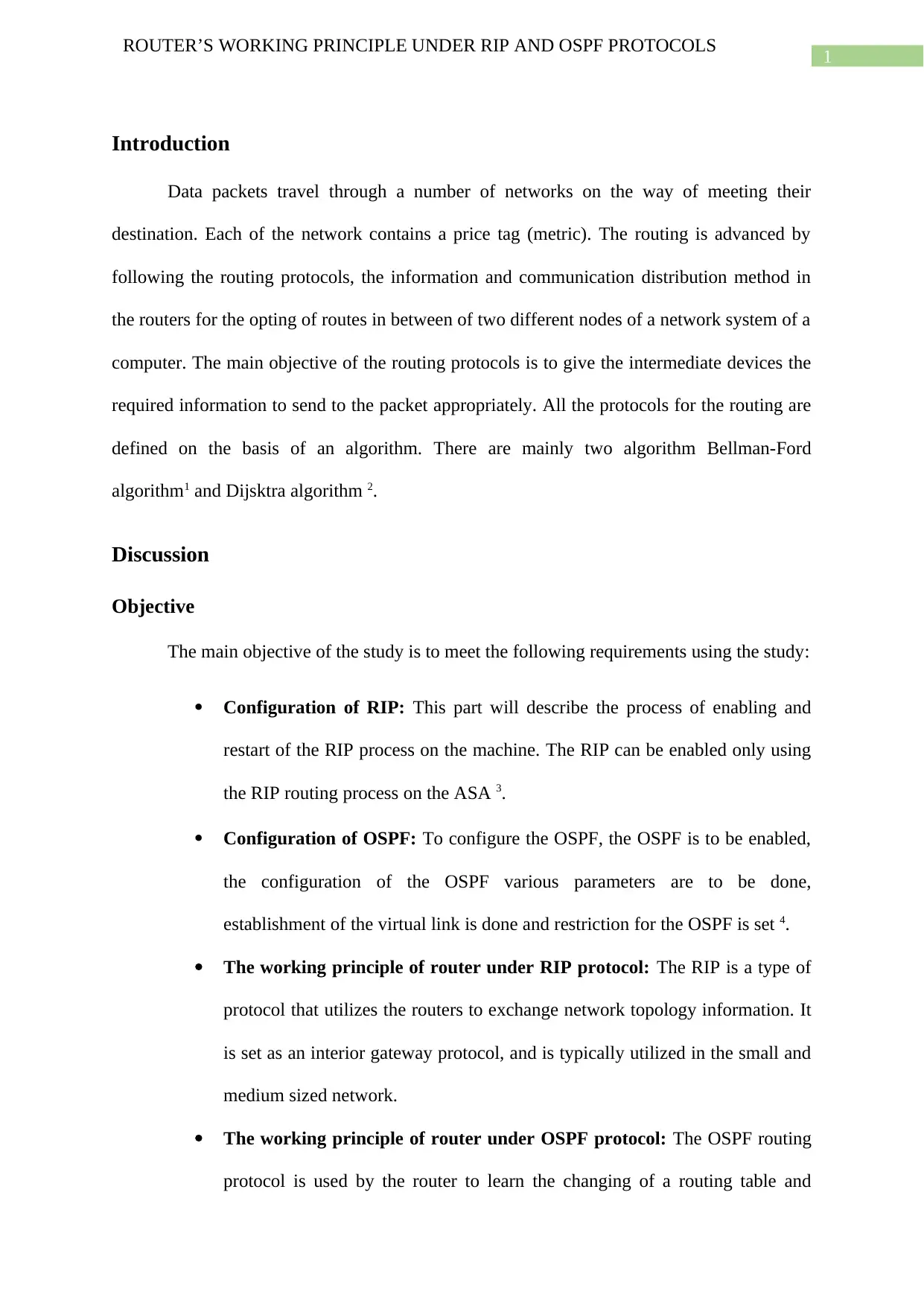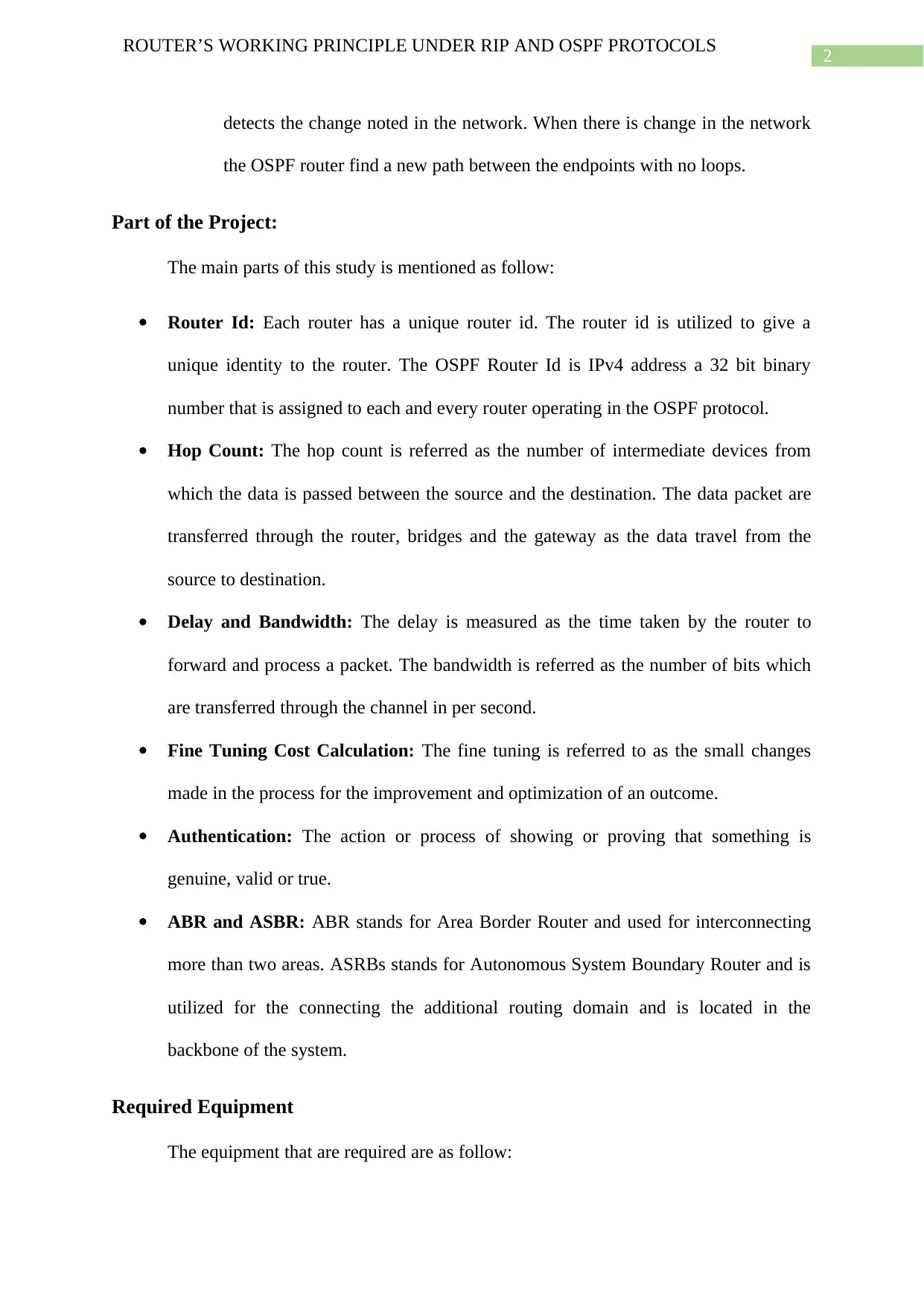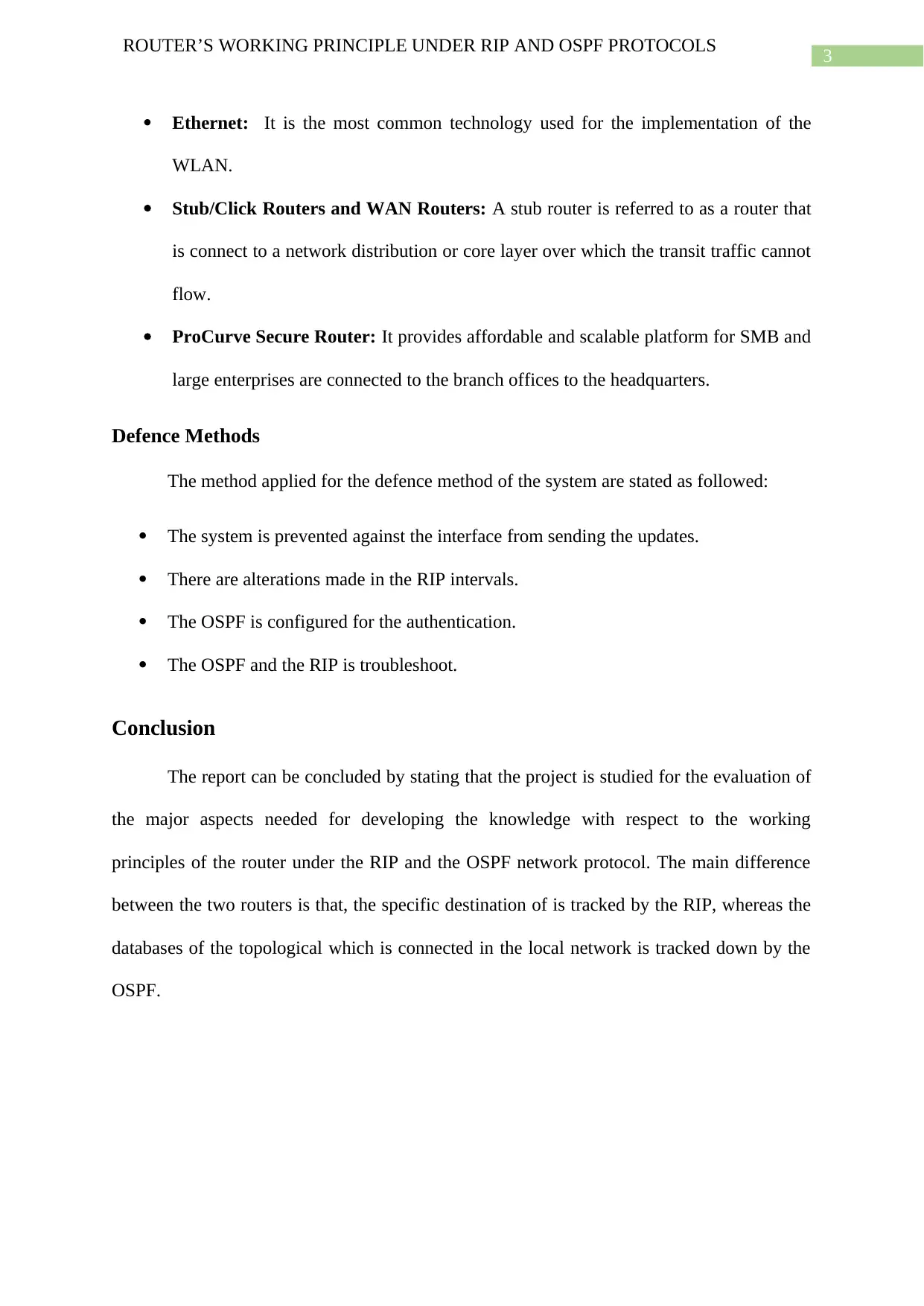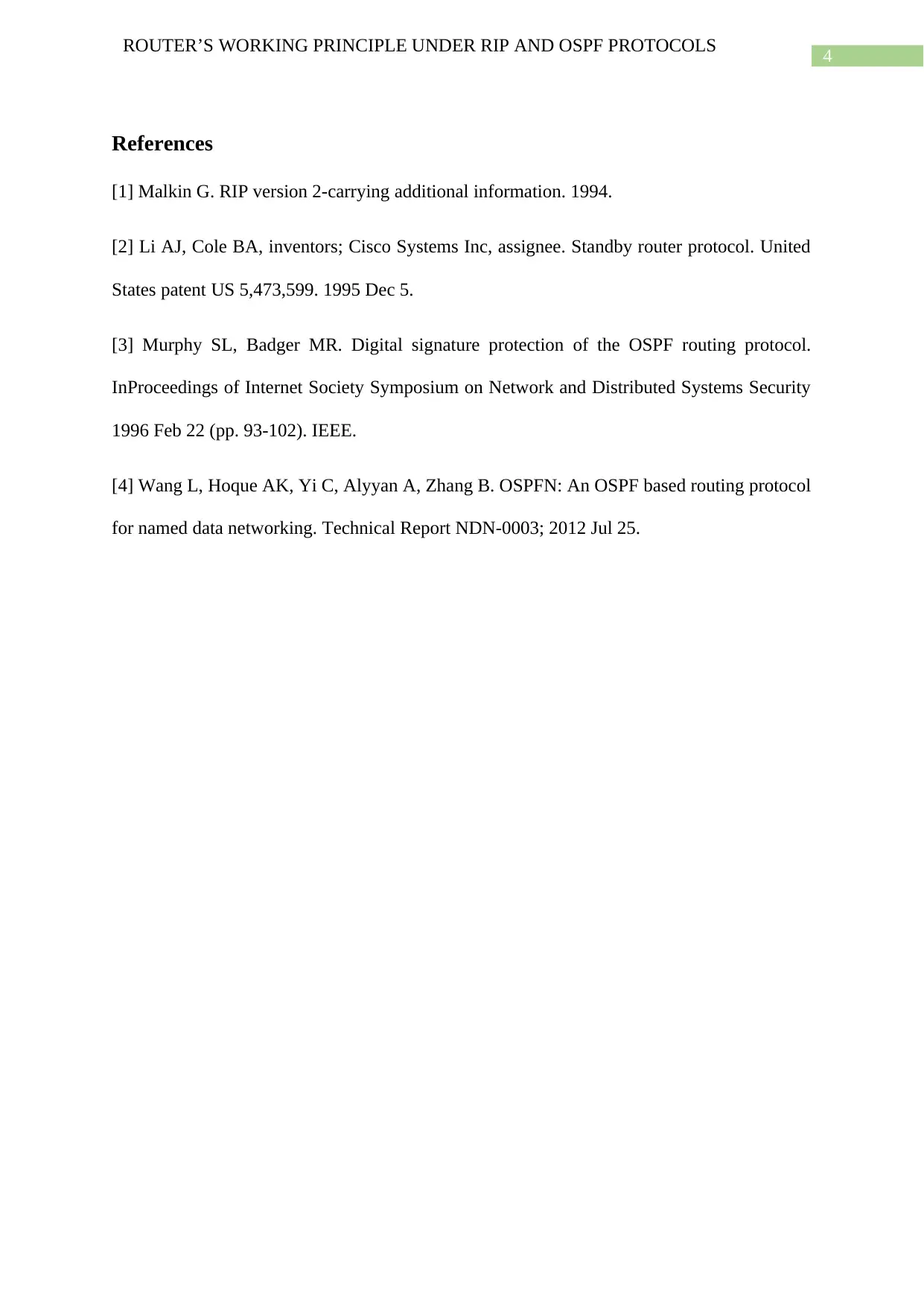Understanding Router's Working Principle under RIP and OSPF Protocols
VerifiedAdded on 2023/01/09
|5
|1007
|31
Report
AI Summary
This report provides a comprehensive analysis of the working principles of routers under the Routing Information Protocol (RIP) and Open Shortest Path First (OSPF) protocols. It covers the configuration of both protocols, including enabling and restarting RIP, configuring OSPF parameters, and establishing virtual links. The report explores the working principles of routers under each protocol, detailing how RIP exchanges network topology information and how OSPF detects and adapts to network changes to find new paths. Key components such as Router IDs, hop counts, delay and bandwidth are explained, along with fine-tuning cost calculations and authentication methods. The report also mentions the required equipment, including Ethernet, stub/click routers, and secure routers, along with defense methods to secure the system against interference and unauthorized access. The conclusion highlights the differences between the two protocols: RIP tracks specific destinations while OSPF tracks topological databases in a local network.
1 out of 5










![[object Object]](/_next/static/media/star-bottom.7253800d.svg)